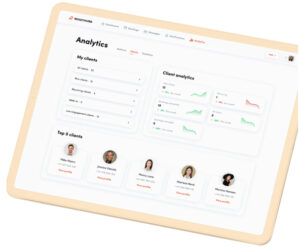Bringing Clarity To The Data Subject Access Request Process

Data Subject Access Requests are one of the most commonly used tools for individuals to gain insight into the personal data that is held about them by organisations. As such, it is of utmost importance for businesses to understand how to handle DSARs in an effective and efficient manner. To give organisations the clarity needed to navigate the DSAR process and provide individuals with the information they require, this article provides an overview of what a DSAR is, why you should consider making them, how to draft a successful DSAR, the types of information that can be relevant to a DSAR, and tips for navigating the DSAR process.
What Is A Data Subject Access Request?
A data subject access request is a request for information that is made by an individual to an organisation. The request can cover any personal data held by the organisation about the data subject, including information that is stored electronically or in paper form. DSARs allow individuals to obtain a copy of any information about them that is held by an organisation and to ensure that the data is accurate and up to date. DSARs are governed by the GDPR, which dictates that organisations must respond to such requests within one month of receiving them.

Why You Should Consider Making A Data Subject Access Request?
Due to the growing importance of data privacy and security, individuals should consider making a DSAR if they have any concerns about their personal data being held by organisations. Making a DSAR can help individuals to take control of their data and protect it from unauthorised access or manipulation. It can also help to clarify any confusion around the type of data that an organisation holds about them and how it is being used. By making a DSAR, individuals can stay informed about how their data is being used and ensure that it is handled responsibly.
How To Make A Data Subject Access Request?
Making a DSAR can be done in a few simple steps. Firstly, an individual should identify the organisation from which they are requesting their personal data and check if they have the contact details for the relevant Data Protection Officer. Secondly, the individual should draft a written request for the data they require, outlining the type of information they require and any deadlines for providing the data. Thirdly, the individual should submit their request to the data controller, ensuring it is sent to the correct person or department. Finally, the individual should follow up with the data controller to ensure their request is being processed and check with them if the data has been received.
Tips For Drafting A Successful Data Subject Access Request
When making a DSAR, it is important to ensure that the request is clear and precise. Individuals should ensure that their request specifies the type of personal data that is being requested and any relevant deadlines for providing the data. Additionally, the request should include as many details as possible about the nature of the data and the time period for which the data will be relevant. It is also important to make sure that the request is sent to the correct person or department at the organisation.
Types Of Information That Can Be Relevant To A Data Subject Access Request
When making a DSAR, individuals should be aware that some types of information may not be covered by the GDPR and may not be included in the response to the request. These types of information may include contact lists and notes, employee records, sales records, client records, financial records, and other sensitive information. Additionally, when making a DSAR, individuals should be aware that some types of information may be redacted by the data controller to protect the privacy and security of third parties.
Navigating The Process Of A Data Subject Access Request
When it comes to navigating the process of a DSAR, it is important to remember that the GDPR dictates that organisations must respond to a DSAR within one month of receiving it. If the data controller needs more time to respond to the request, they must contact the individual and provide them with an explanation. Additionally, when an individual receives their data, they should check that it is complete and up-to-date. If there is any information that the data controller has not provided in response to the request, the individual can contact them to ensure that they receive all the data they require.
Facilitating Effective Communication During A Data Subject Access Request
During the DSAR process, it is important to facilitate effective communication between the data controller and the individual. This may involve providing the data controller with additional information about the data that is required and responding in a timely manner to any queries that the data controller may have. Additionally, individuals should ensure that they provide clear instructions on how to access and view the data that is being requested.
Conclusion
In conclusion, Data Subject Access Requests can be an effective tool for individuals to gain insight into their personal data that is held by organisations. To ensure that the process runs smoothly, it is important for organisations to understand the requirements of the DSAR process, as well as tips for drafting a successful DSAR and types of information that can be relevant. Additionally, individuals should strive to facilitate effective communication throughout this process and ensure that their requests are clear and concise. By following these steps, individuals can gain clarity around the data that is held about them and ensure that it is being handled responsibly.

Lyle Vasquez is a technology blogger based in Connecticut. He has been passionate about technology since early childhood when he used to take apart and rebuild computers in his parent’s garage. Lyle’s tech-related blog posts are written to help others learn how to use the latest technology tools and devices. He loves to find new ways to integrate technology into everyday life. Lyle is a great resource for tech enthusiasts looking to stay up to date on the latest technologies.








